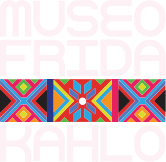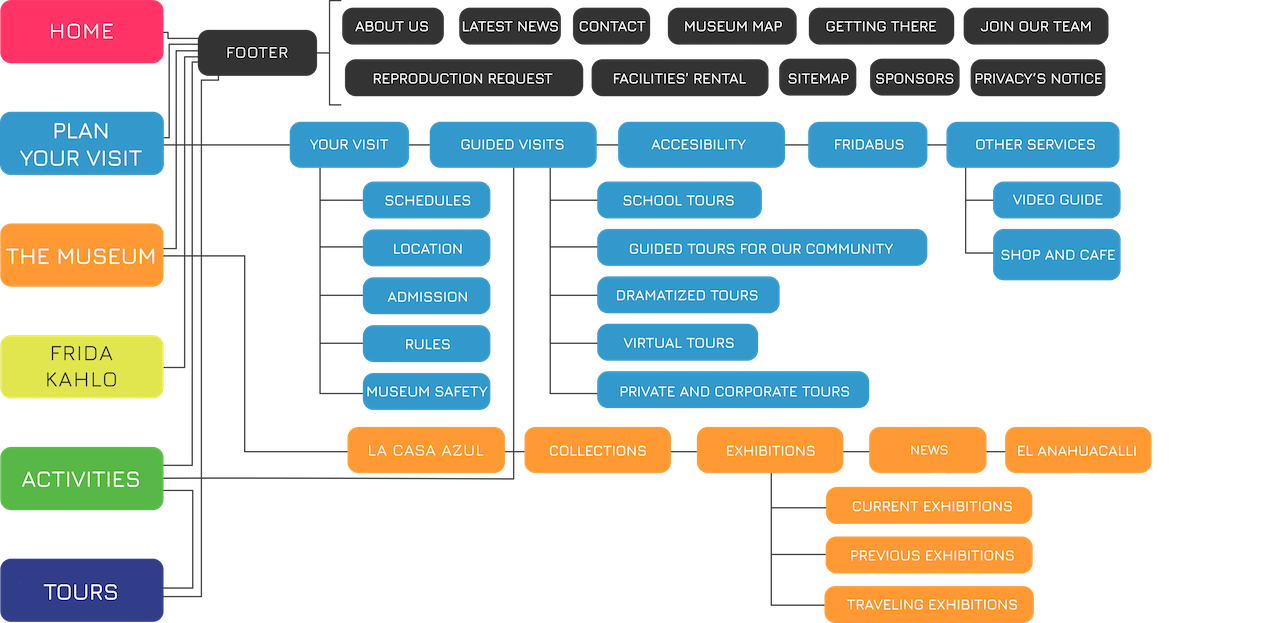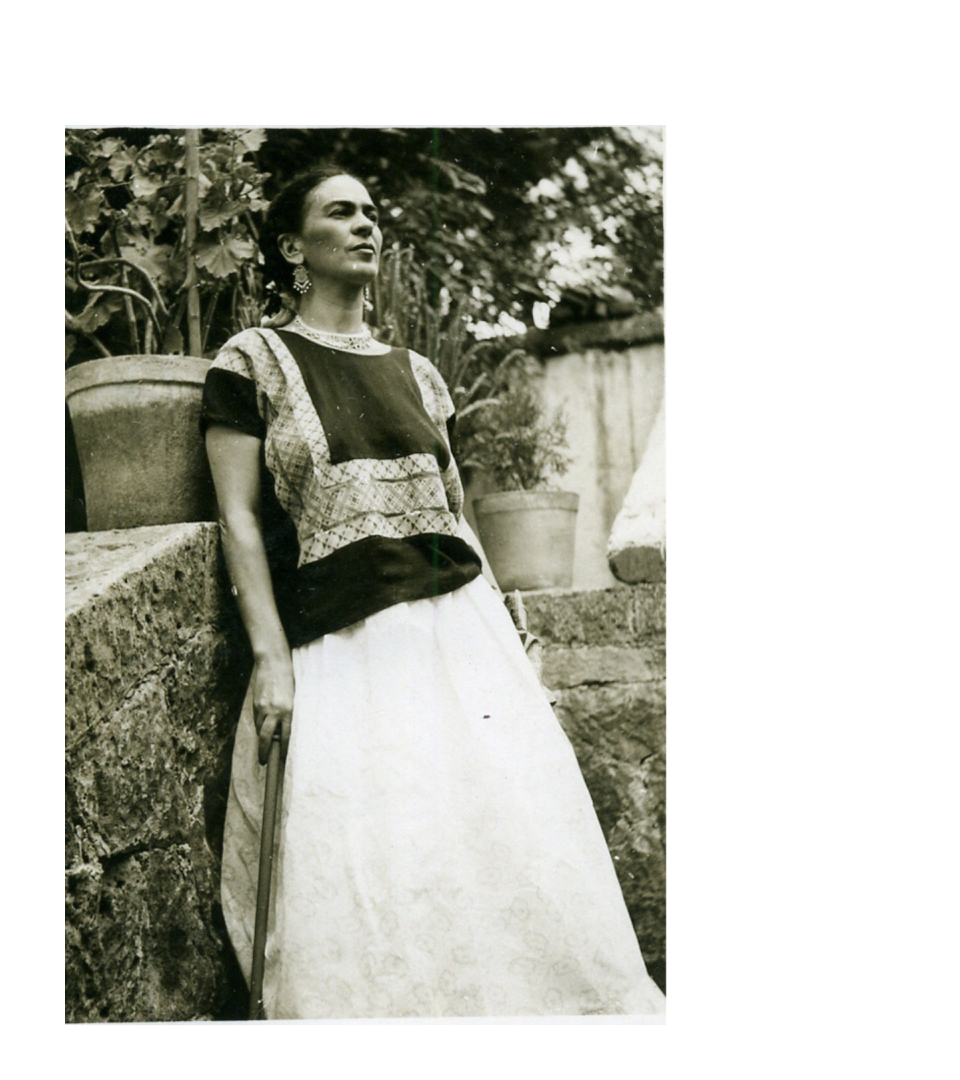
Wilhelm (Guillermo) Kahlo, Frida’s father, is born.
Wilhelm (Guillermo) Kahlo, Frida’s father, is born.
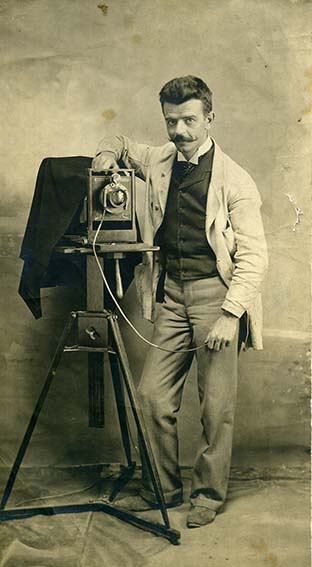
Matilde Calderón, Frida’s mother, is born.
Matilde Calderón, Frida’s mother, is born.
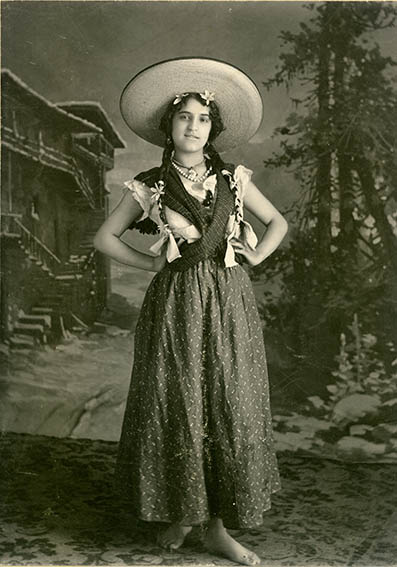
Diego Rivera and his twin brother are born.
Diego Rivera and his twin brother are born.
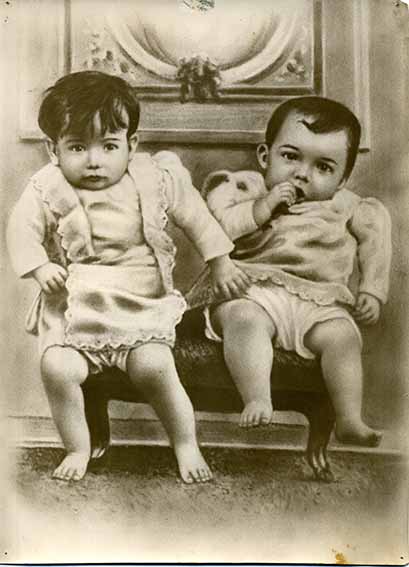
The Del Carmen neighborhood, the barrio where Frida will live, is inaugurated.
The Del Carmen neighborhood, the barrio where Frida will live, is inaugurated.
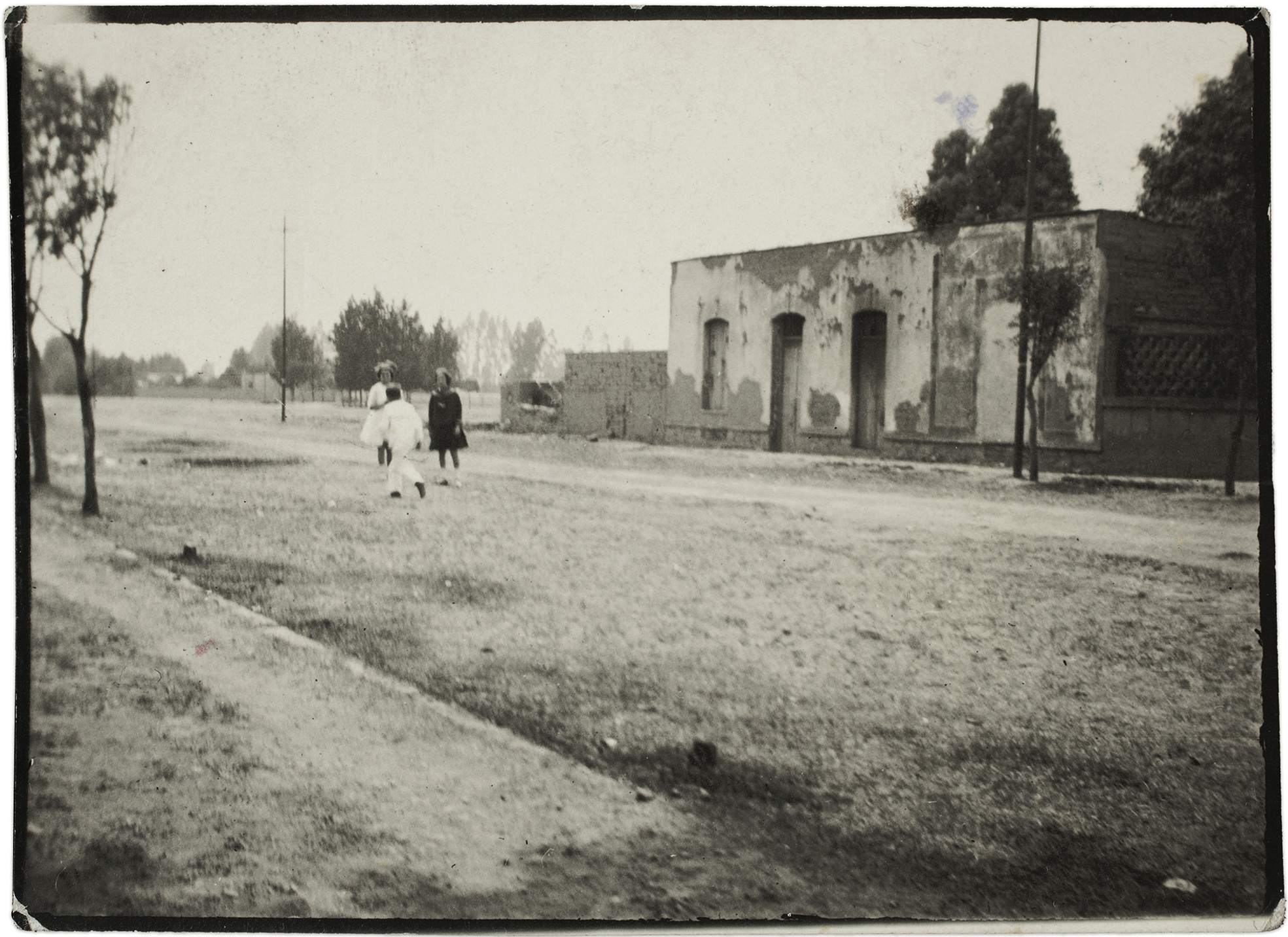
Wilhelm Kahlo arrives in Mexico and changes his name to Guillermo.
Wilhelm Kahlo arrives in Mexico and changes his name to Guillermo.
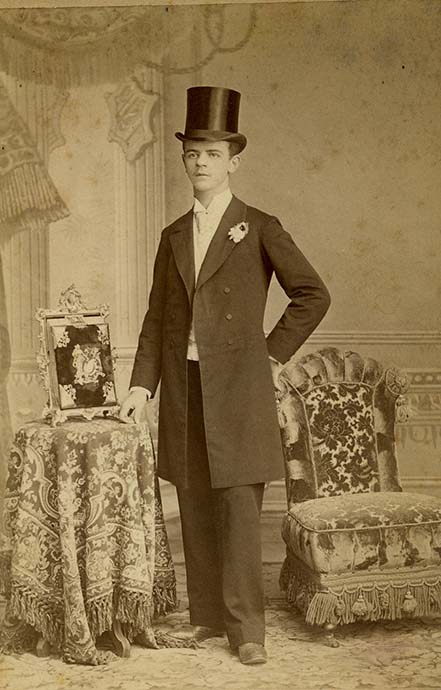
Guillermo Kahlo marries for the first time, but after a few years is left a widower.
Guillermo Kahlo marries for the first time, but after a few years is left a widower.
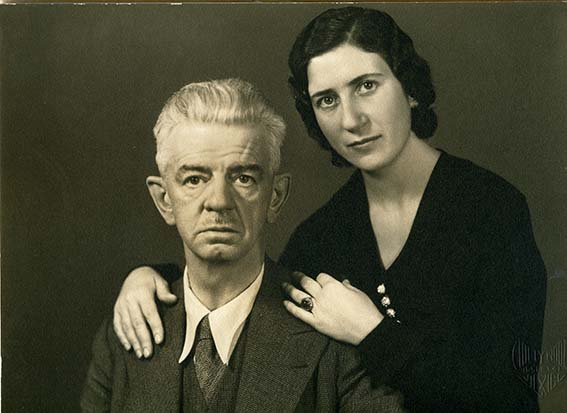
Guillermo Kahlo marries Matilde Calderón.
Guillermo Kahlo marries Matilde Calderón.
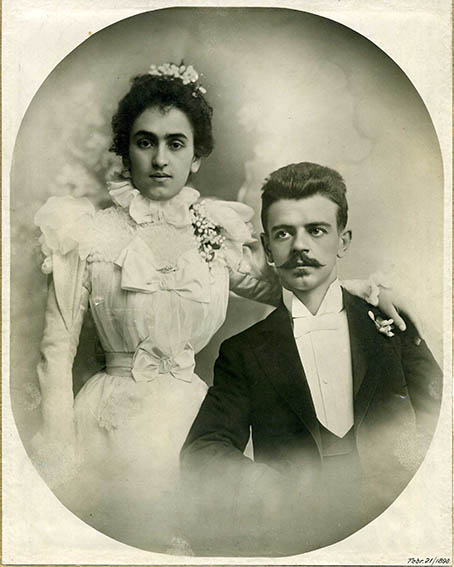
Matilde, the first daughter, is born to the Kahlo Calderón family.
Matilde, the first daughter, is born to the Kahlo Calderón family.
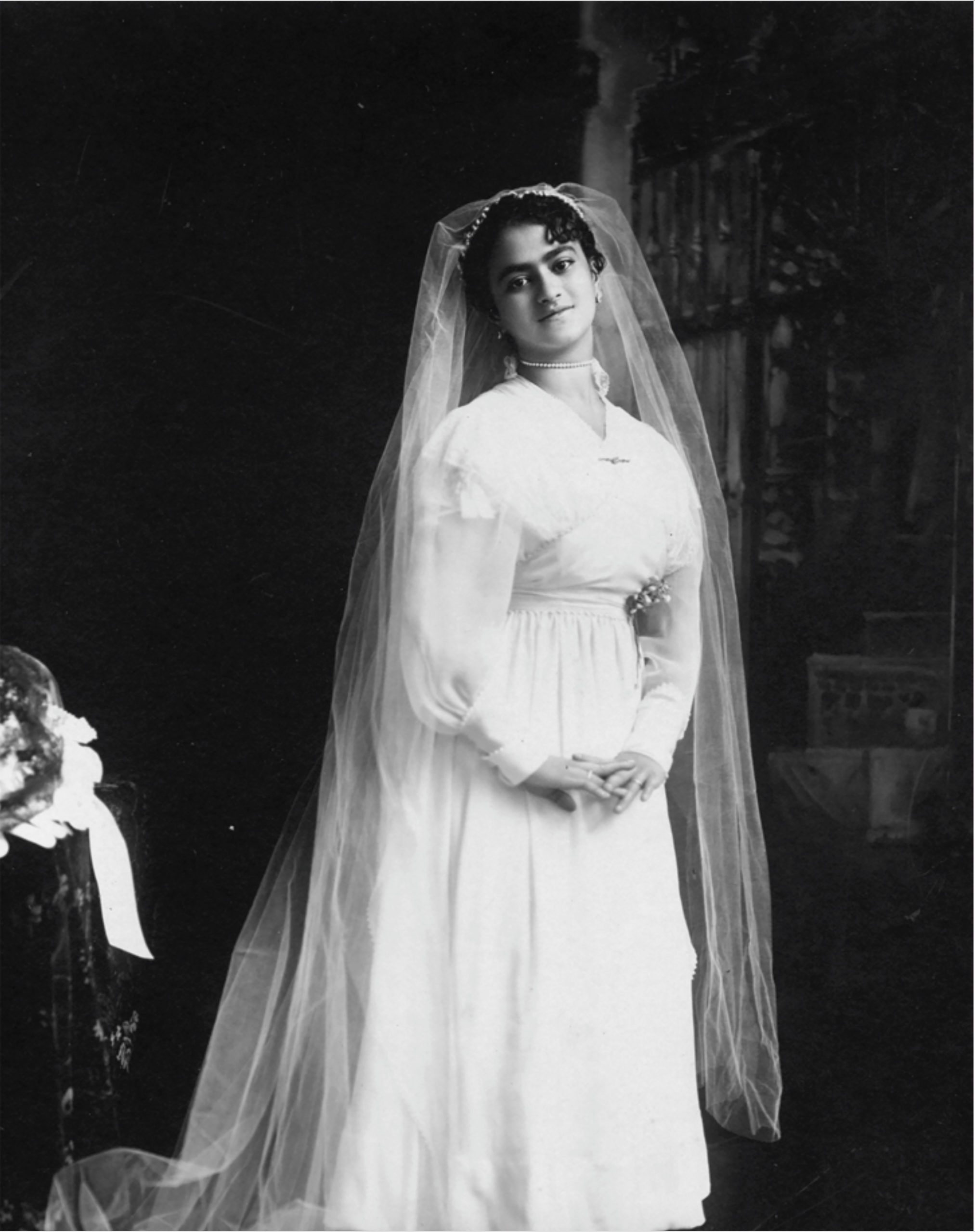
Adriana, Frida’s sister, is born.
Adriana, Frida’s sister, is born.
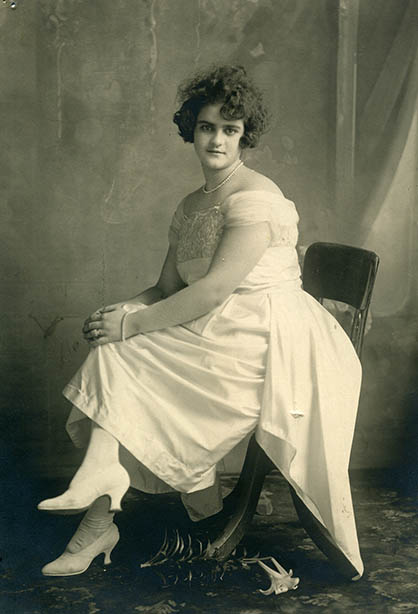
Guillermo builds a home for his family in Coyoacán that will later be known as the Casa Azul or Blue House.
Guillermo builds a home for his family in Coyoacán that will later be known as the Casa Azul or Blue House.
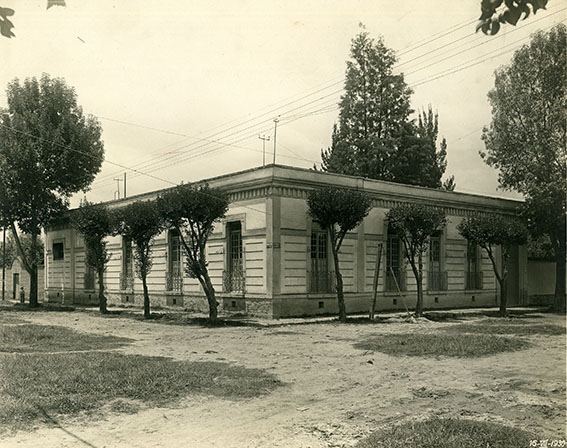
Guillermo Kahlo is named the official photographer of monuments.
Guillermo Kahlo is named the official photographer of monuments.
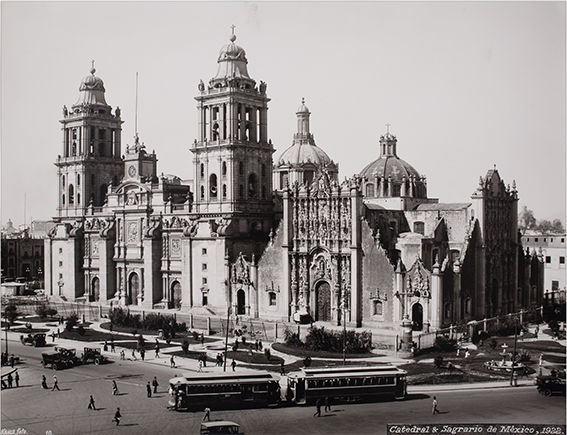
Frida Kahlo is born.
Frida Kahlo is born.
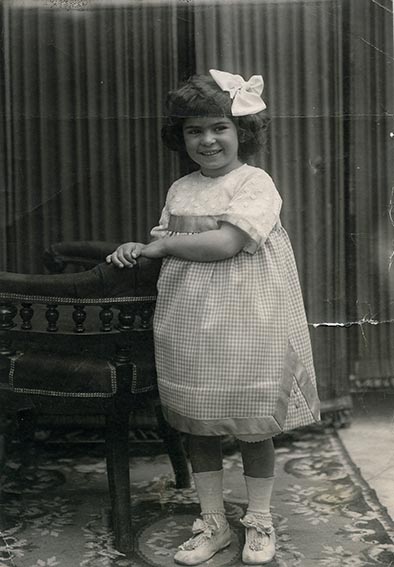
Cristina, Frida’s younger sister, is born.
Cristina, Frida’s younger sister, is born.
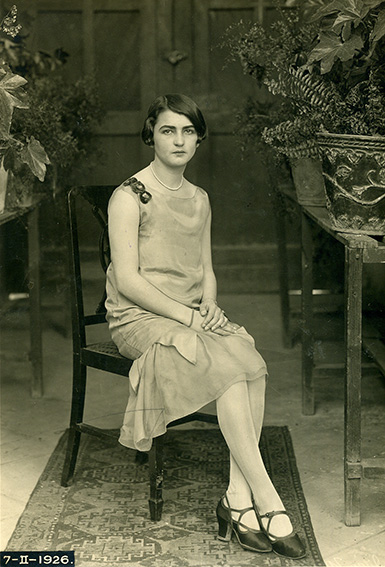
The Mexican Revolution breaks out.
The Mexican Revolution breaks out.
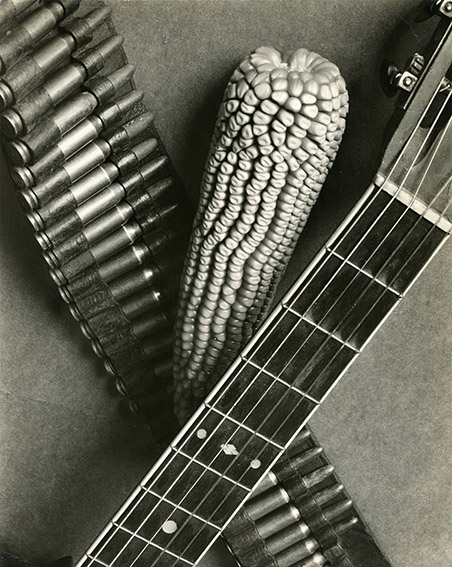
Frida contracts polio.
Frida contracts polio.
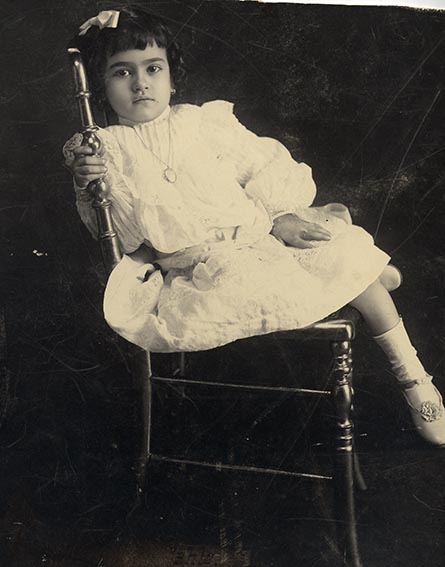
Frida enrolls in high school at the National Preparatory School.
Frida enrolls in high school at the National Preparatory School.
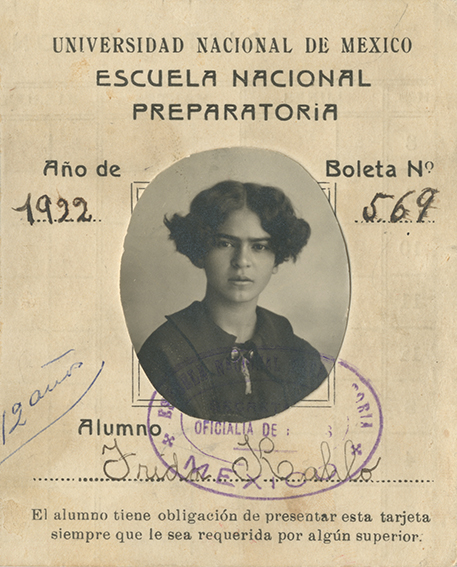
Frida joins “The Cachuchas.”
Frida joins “The Cachuchas.”

Frida leaves school for a while.
Frida leaves school for a while.

Frida is in a serious accident that will forever mark her life.
Frida is in a serious accident that will forever mark her life.
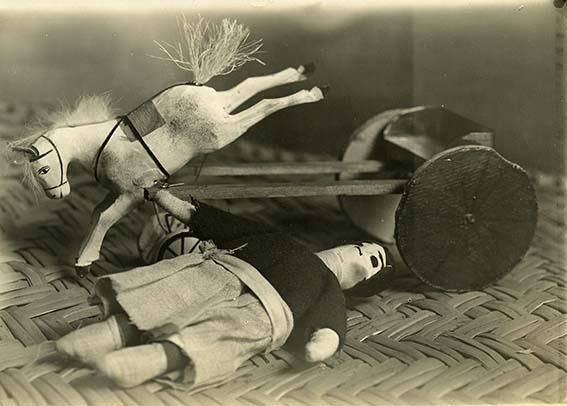
Frida paints her first self-portrait.
Frida paints her first self-portrait.

Frida paints to help with her medical bills.
Frida paints to help with her medical bills.

Frida begins a close relationship with Diego Rivera.
Frida begins a close relationship with Diego Rivera.

Frida and Diego are married.
Frida and Diego are married.

Frida paints The Bus, a work referring to her accident.
Frida paints The Bus, a work referring to her accident.

Frida has her first pregnancy.
Frida has her first pregnancy.
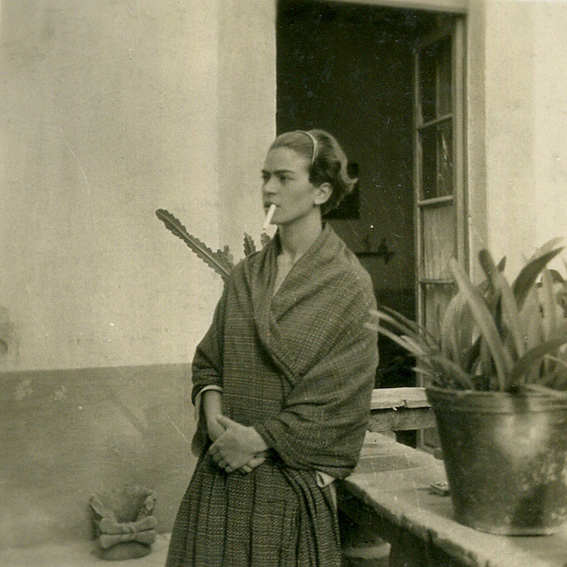
Diego pays the debt that hangs over the Kahlo household.
Diego pays the debt that hangs over the Kahlo household.
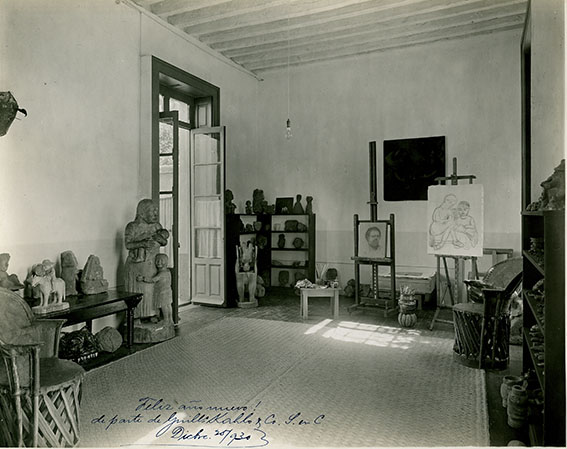
Frida and Diego live for a while in San Francisco, California.
Frida and Diego live for a while in San Francisco, California.
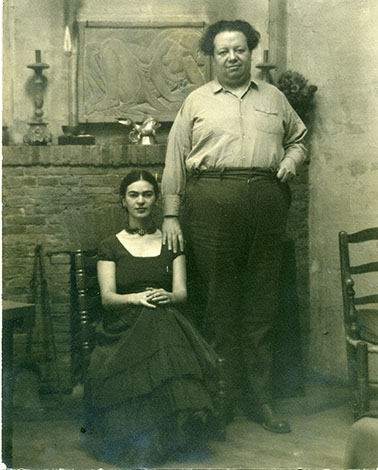
Frida poses for the earliest portraits that will immortalize her Mexican attire.
Frida poses for the earliest portraits that will immortalize her Mexican attire.
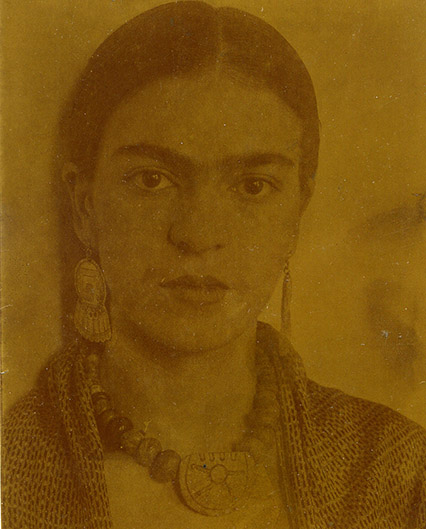
Frida travels to Mexico City, where she meets photographer Nickolas Muray.
Frida travels to Mexico City, where she meets photographer Nickolas Muray.
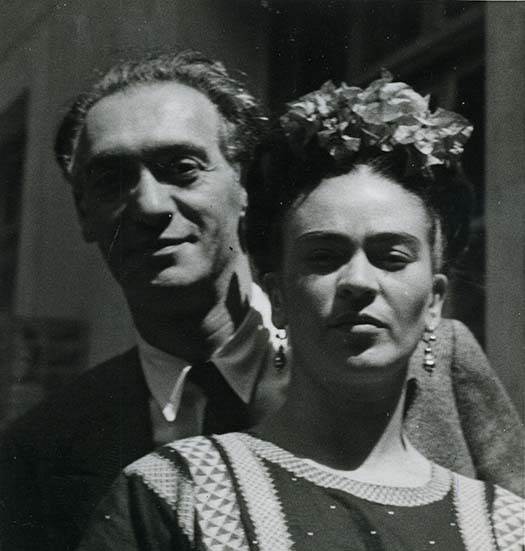
Frida paints her canvas Frieda and Diego Rivera.
Frida paints her canvas Frieda and Diego Rivera.

Frida and Diego return to Mexico, where they meet filmmaker Sergei Eisenstein.
Frida and Diego return to Mexico, where they meet filmmaker Sergei Eisenstein.

Frida and Diego briefly live in New York.
Frida and Diego briefly live in New York.
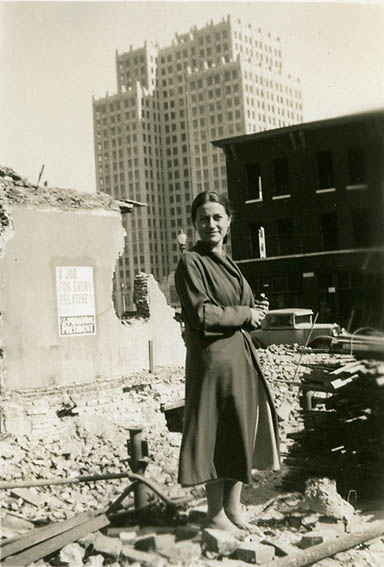
Diego and Frida move to Detroit, Michigan.
Diego and Frida move to Detroit, Michigan.
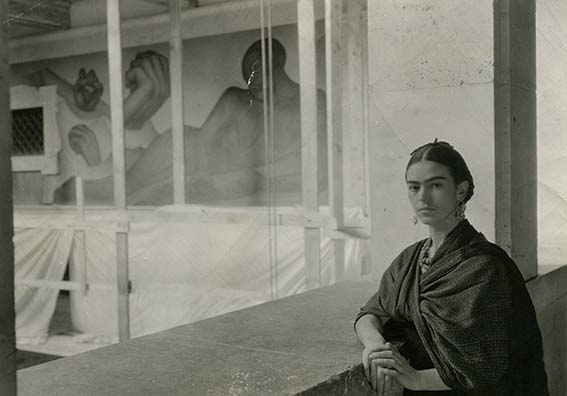
Frida paints her Self-Portrait (on the Border between Mexico and the United States).
Frida paints her Self-Portrait (on the Border between Mexico and the United States).

Frida paints Frida and the Cesarean (unfinished).
Frida paints Frida and the Cesarean (unfinished).
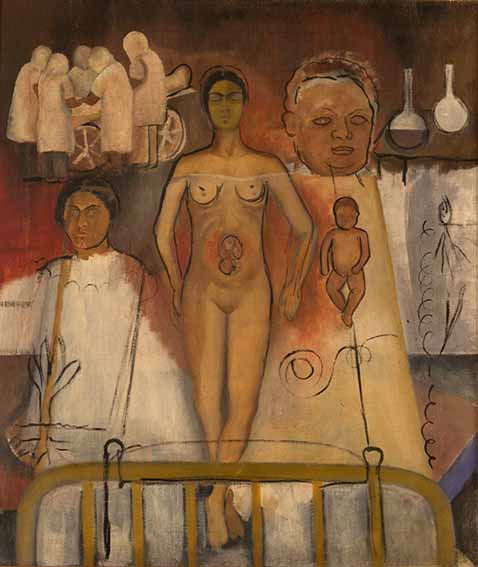
In July, Frida paints Henry Ford Hospital (The Flying Bed).
In July, Frida paints Henry Ford Hospital (The Flying Bed).

Frida travels to Mexico to see her ailing mother.
Frida travels to Mexico to see her ailing mother.
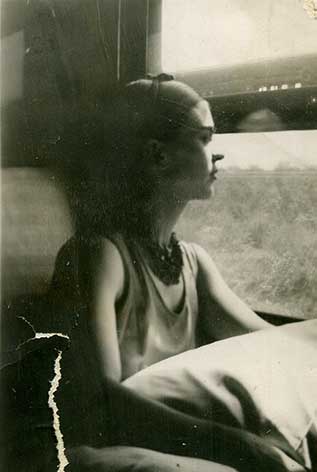
Frida’s mother dies.
Frida’s mother dies.
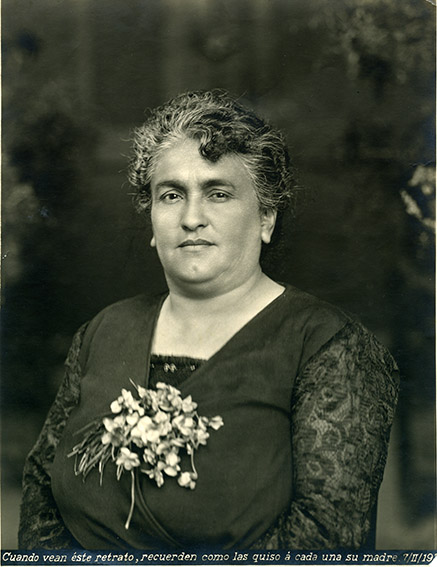
Frida and Diego move to New York, where Rivera paints the controversial Rockefeller Center mural.
Frida and Diego move to New York, where Rivera paints the controversial Rockefeller Center mural.
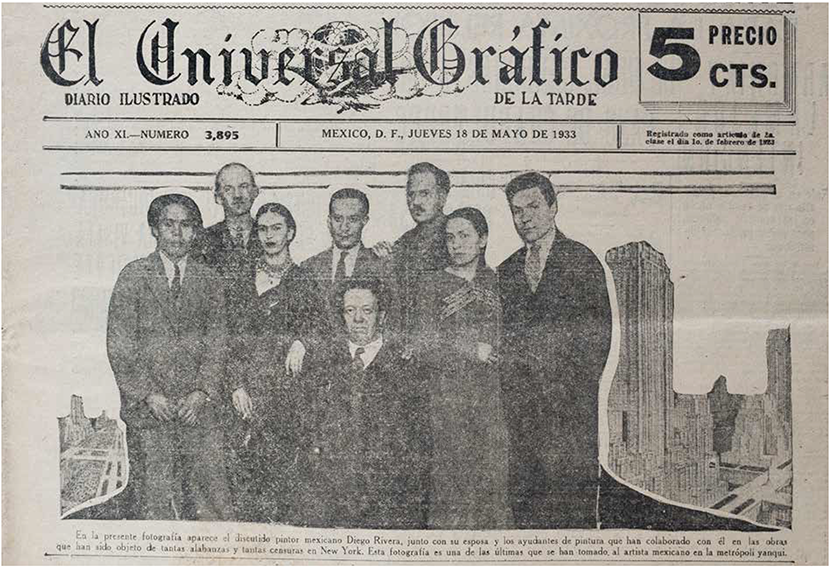
Frida paints the unfinished canvas, New York.
Frida paints the unfinished canvas, New York.
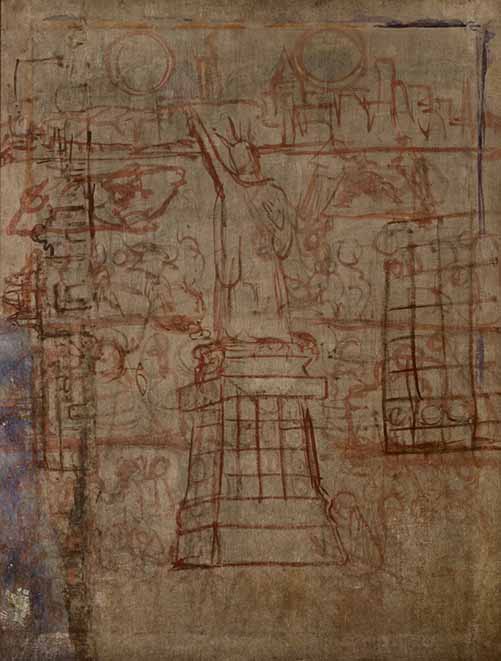
Frida paints My Dress Hangs Here (There Hangs My Dress/Allá cuelga mi vestido).
Frida paints My Dress Hangs Here (There Hangs My Dress/Allá cuelga mi vestido).

Frida and Diego move into their house in San Angel.
Frida and Diego move into their house in San Angel.
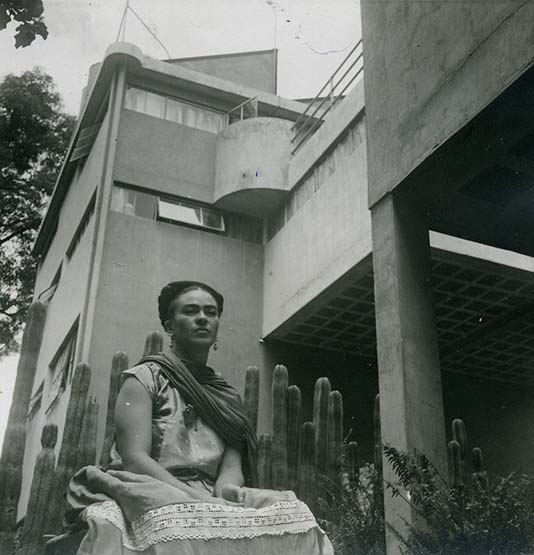
Frida is hospitalized three times.
Frida is hospitalized three times.

Frida meets sculptor Isamu Noguchi.
Frida meets sculptor Isamu Noguchi.
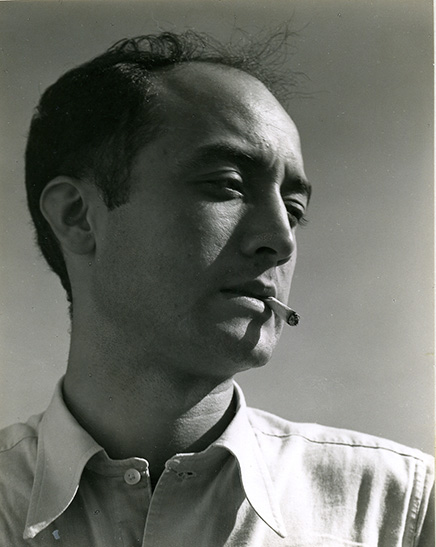
Frida paints Self-Portrait (with Curly Hair/pelo rizado).
Frida paints Self-Portrait (with Curly Hair/pelo rizado).

Frida paints A Few Small Jabs/Unos cuantos piquetitos.
Frida paints A Few Small Jabs/Unos cuantos piquetitos.

With the outbreak of the Spanish Civil War, Frida and Diego seek aid for the Republicans.
With the outbreak of the Spanish Civil War, Frida and Diego seek aid for the Republicans.
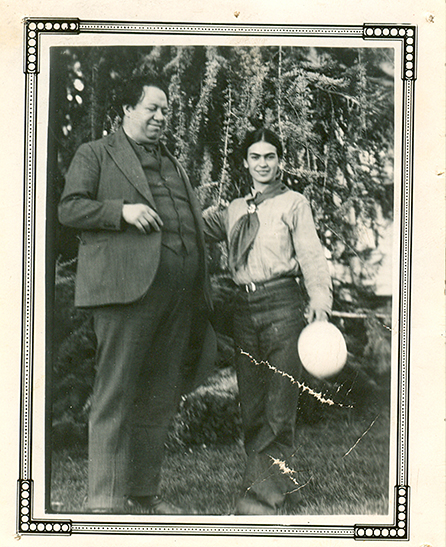
Frida has another operation on her right foot.
Frida has another operation on her right foot.
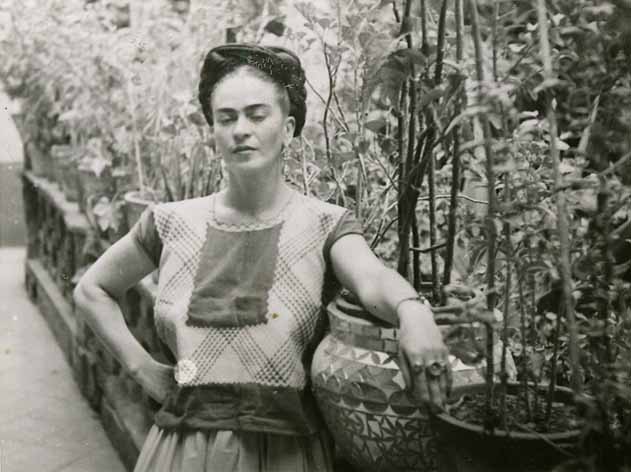
Frida exhibits at the Gallery of the Department of Social Action of the Autonomous University of Mexico.
Frida exhibits at the Gallery of the Department of Social Action of the Autonomous University of Mexico.

Frida paints Portrait of Alberto Misrachi.
Frida paints Portrait of Alberto Misrachi.

Frida and Diego receive Russian leader Leon Trotsky in their home.
Frida and Diego receive Russian leader Leon Trotsky in their home.
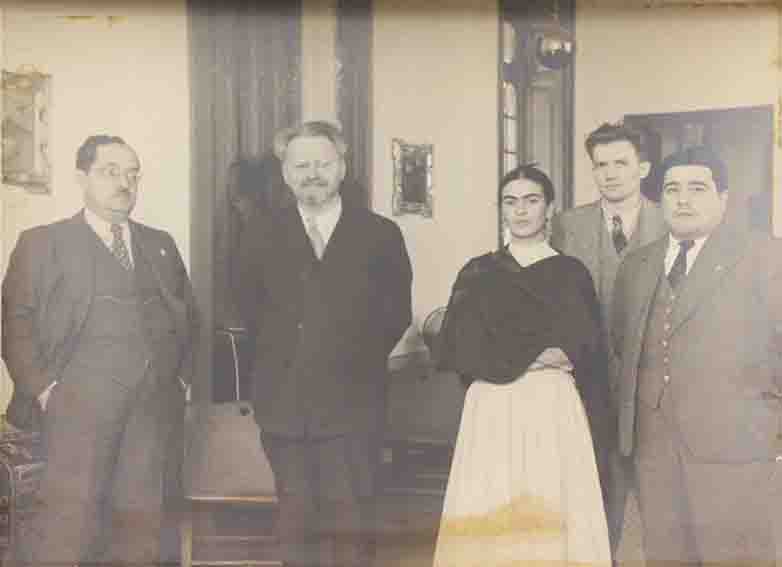
Frida appears in the October issue of Vogue magazine.
Frida appears in the October issue of Vogue magazine.

Frida paints Fulang-Chang and Me.
Frida paints Fulang-Chang and Me.

French writer André Breton comes to Mexico and is struck by Frida’s art.
French writer André Breton comes to Mexico and is struck by Frida’s art.
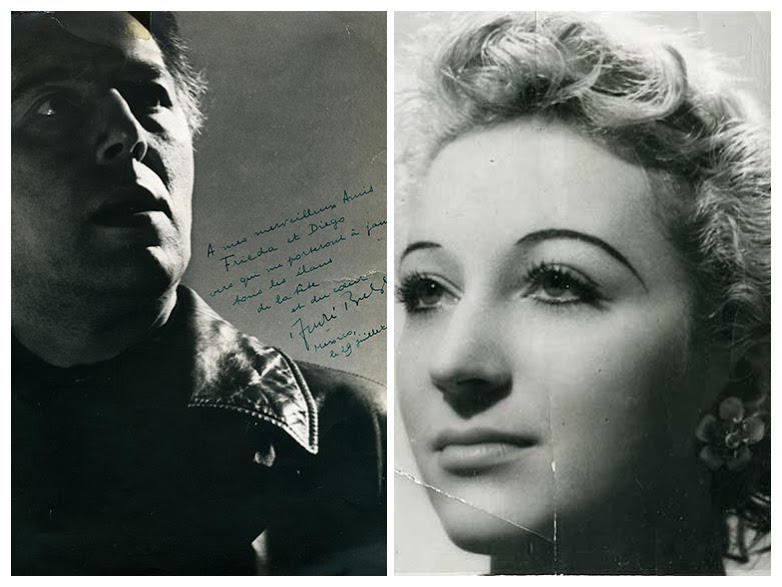
Frida and Diego travel with the Breton-Lamba and Trotsky-Sedova couples to cities in Mexico.
Frida and Diego travel with the Breton-Lamba and Trotsky-Sedova couples to cities in Mexico.

Frida has her first solo exhibition in New York.
Frida has her first solo exhibition in New York.
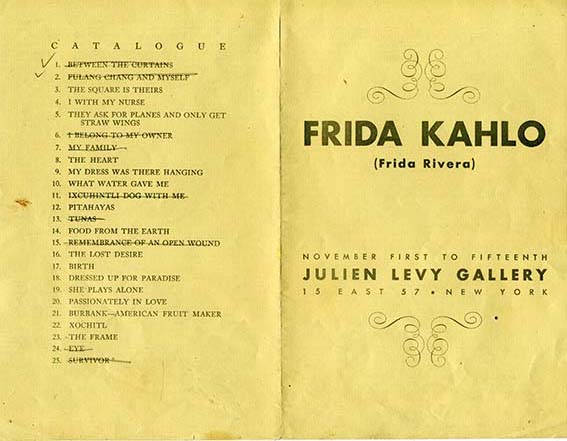
Frida paints The Four Inhabitants of Mexico City (The Zocalo Is His/Theirs zócalo es suyo).
Frida paints The Four Inhabitants of Mexico City (The Zocalo Is His/Theirs zócalo es suyo).

Frida paints Ixcuhintli [sic] Dog with Me.
Frida paints Ixcuhintli [sic] Dog with Me.

Frida paints The Suicide of Dorothy Hale.
Frida paints The Suicide of Dorothy Hale.

Frida is photographed by her friends Julien Levy and Nickolas Muray.
Frida is photographed by her friends Julien Levy and Nickolas Muray.

Frida goes to Paris to exhibit some of her paintings.
Frida goes to Paris to exhibit some of her paintings.

Marcel Duchamp helps Frida exhibit in Paris.
Marcel Duchamp helps Frida exhibit in Paris.
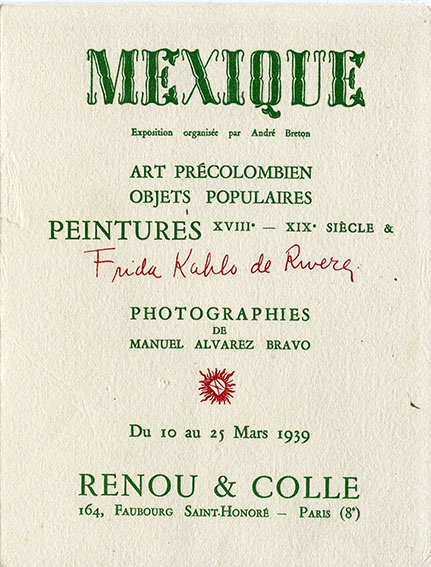
After the Mexique exhibition, the Musée du Louvre buys one of Frida’s works.
After the Mexique exhibition, the Musée du Louvre buys one of Frida’s works.

Frida is invited to exhibit in London, but she rejects the offer because war is imminent.
Frida is invited to exhibit in London, but she rejects the offer because war is imminent.
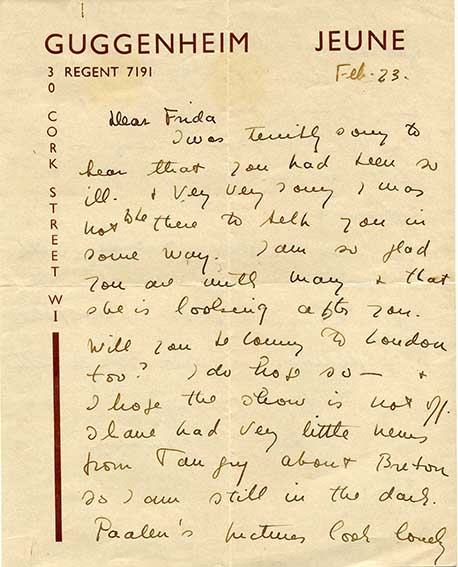
Frida paints What the Water Has Given to Me.
Frida paints What the Water Has Given to Me.

Frida and Diego get divorced.
Frida and Diego get divorced.
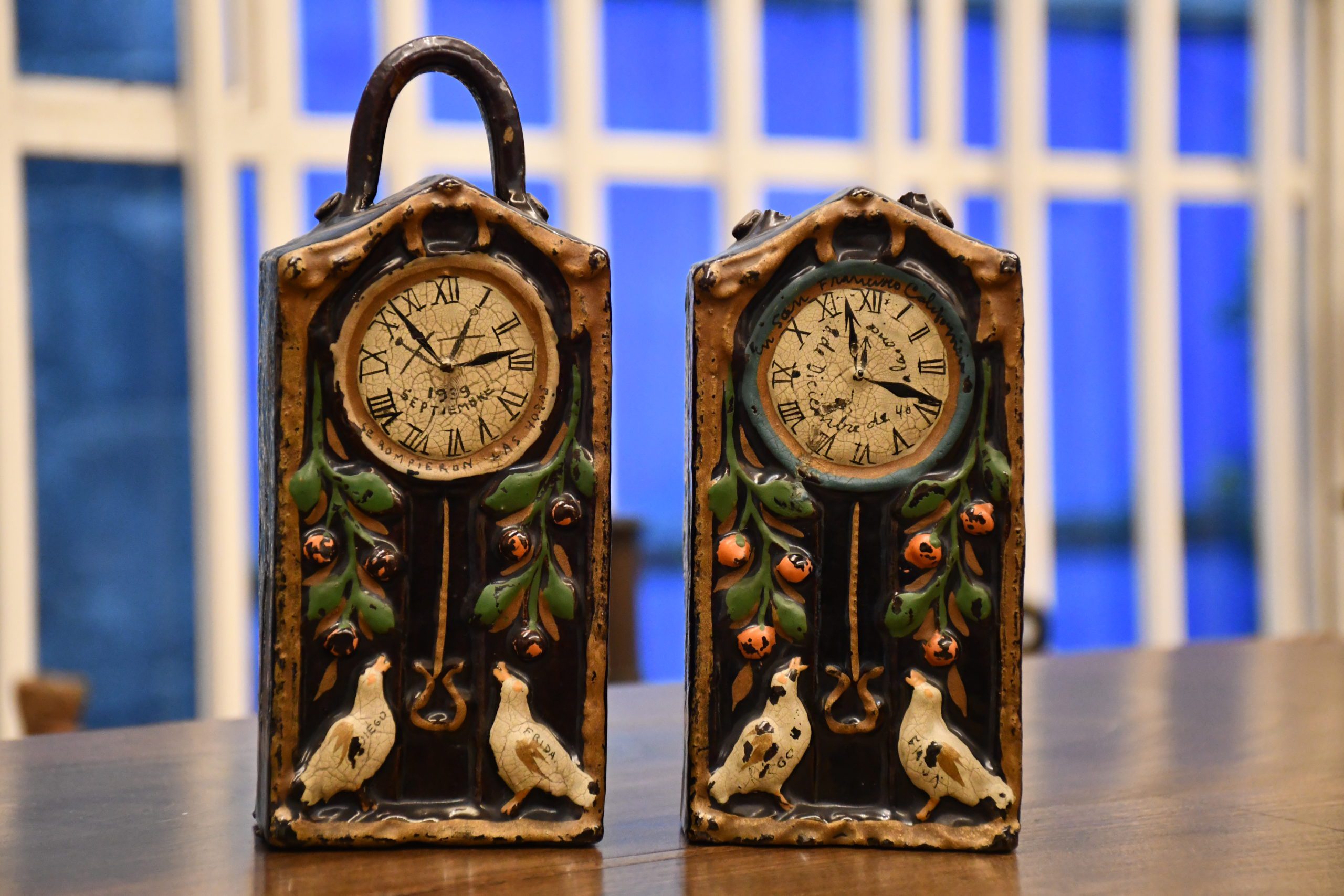
Kahlo paints one of her most famous works: The Two Fridas.
Kahlo paints one of her most famous works: The Two Fridas.

Frida participates in several international exhibitions.
Frida participates in several international exhibitions.

Leon Trotsky is assassinated.
Leon Trotsky is assassinated.
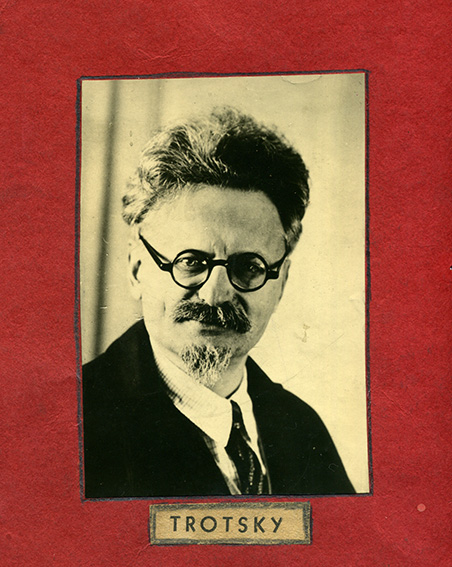
Frida paints Self-Portrait with Monkey and Ribbon on Her Neck.
Frida paints Self-Portrait with Monkey and Ribbon on Her Neck.

Frida paints Self-Portrait (dedicated to Dr. Leo Eloesser).
Frida paints Self-Portrait (dedicated to Dr. Leo Eloesser).

Frida paints Self-Portrait with Necklace of Thorns and Hummingbird./Autorretrato con collar de espinas y colibrí.
Frida paints Self-Portrait with Necklace of Thorns and Hummingbird./Autorretrato con collar de espinas y colibrí.

Frida paints Self-Portrait with Short Hair.
Frida paints Self-Portrait with Short Hair.

Frida did a detailed drawing of what her house looked like.
Frida did a detailed drawing of what her house looked like.
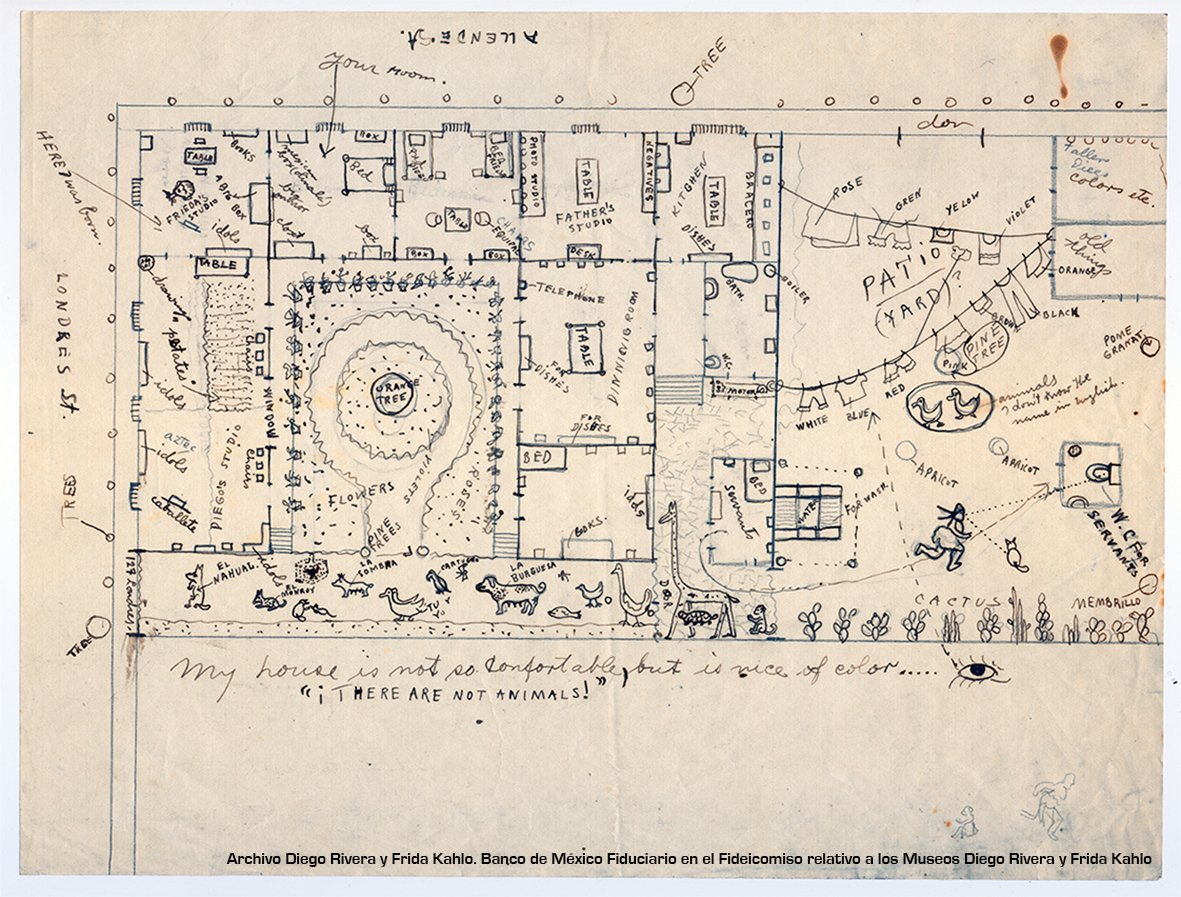
Frida and Diego get remarried.
Frida and Diego get remarried.
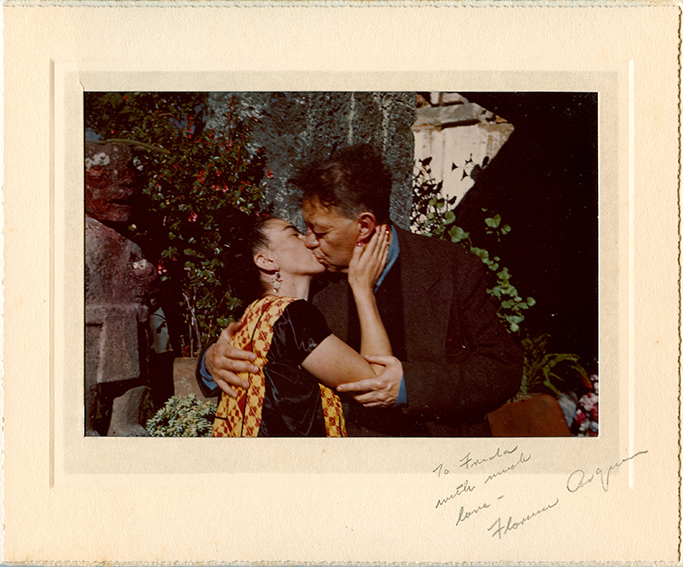
Frida and muralist Emmy Lou Packard become friends.
Frida and muralist Emmy Lou Packard become friends.
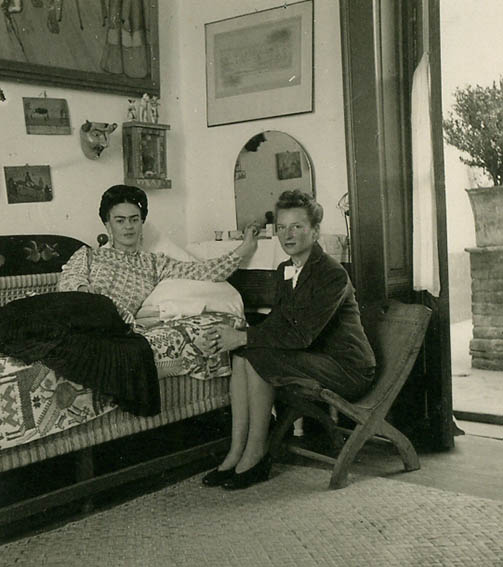
Frida paints Self-Portrait (Me and My Parakeets/Yo y mis pericos).
Frida paints Self-Portrait (Me and My Parakeets/Yo y mis pericos).

Guillermo Kahlo dies.
Guillermo Kahlo dies.
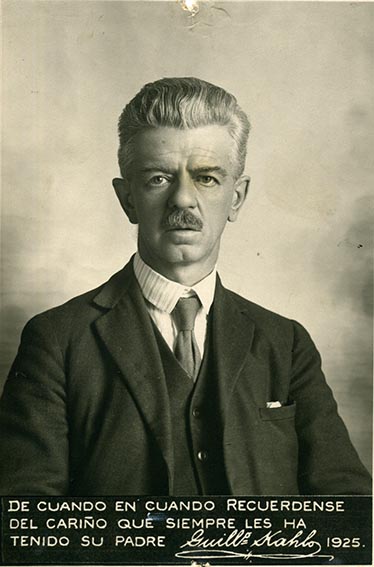
Frida exhibits in the Institute of Contemporary Art in Boston.
Frida exhibits in the Institute of Contemporary Art in Boston.
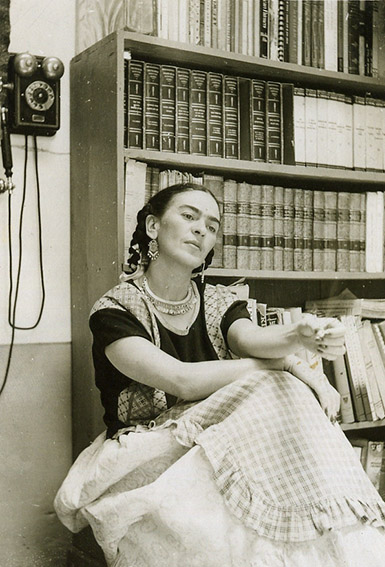
Construction begins on the Anahuacalli.
Construction begins on the Anahuacalli.
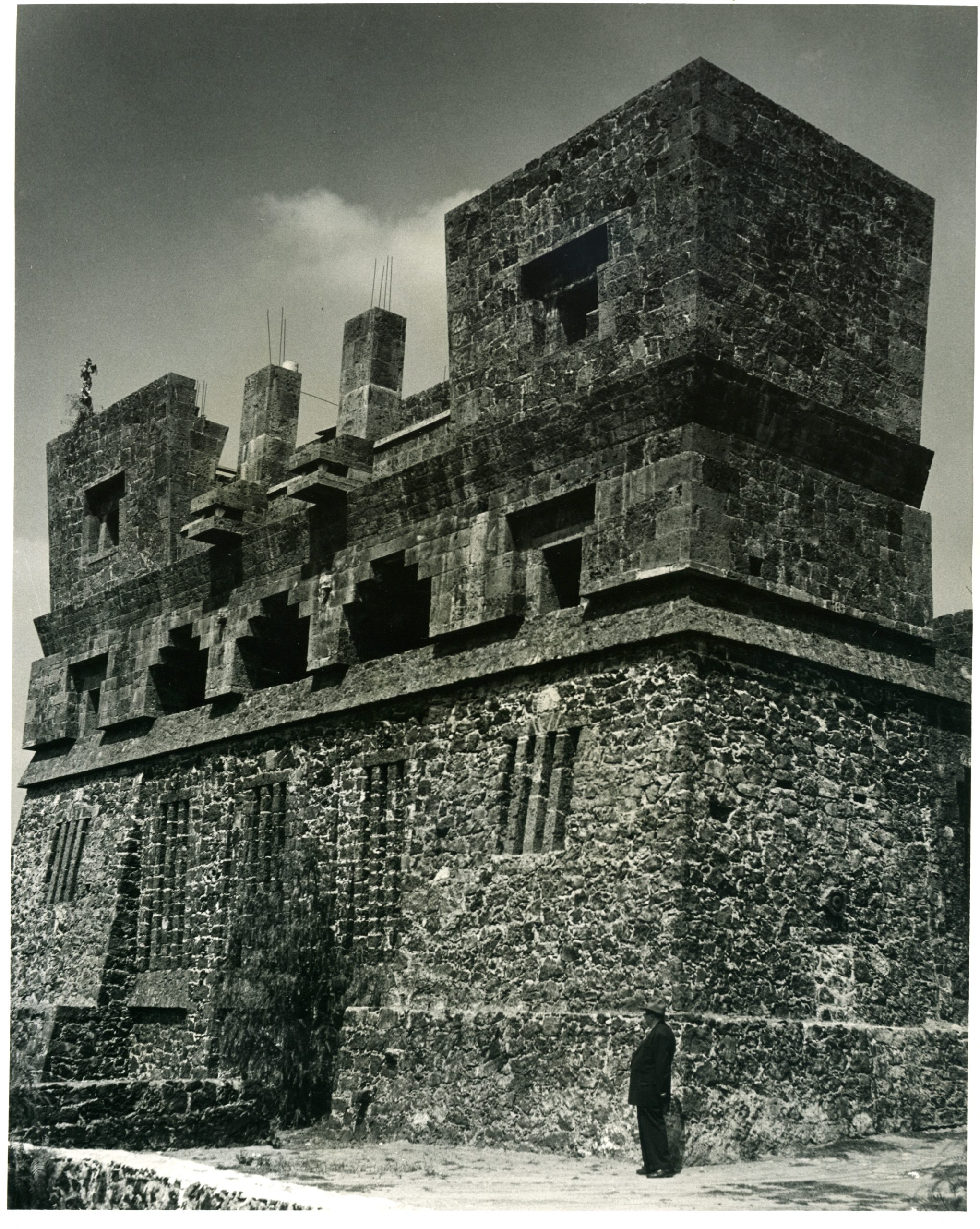
Frida paints Still Life.
Frida paints Still Life.

Frida again exhibits her work in the Museum of Modern Art in New York.
Frida again exhibits her work in the Museum of Modern Art in New York.
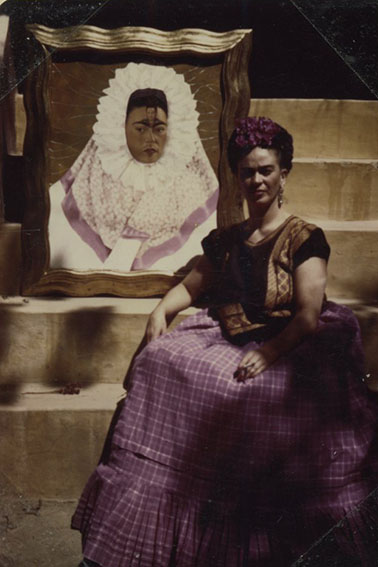
Frida paints Self-Portrait as Tehuana or Diego on My Mind.
Frida paints Self-Portrait as Tehuana or Diego on My Mind.

Frida paints Self-Portrait (with Monkeys).
Frida paints Self-Portrait (with Monkeys).

Frida gives classes to the group of Los Fridos.
Frida gives classes to the group of Los Fridos.

Frida exhibits her work in Philadelphia and New York.
Frida exhibits her work in Philadelphia and New York.
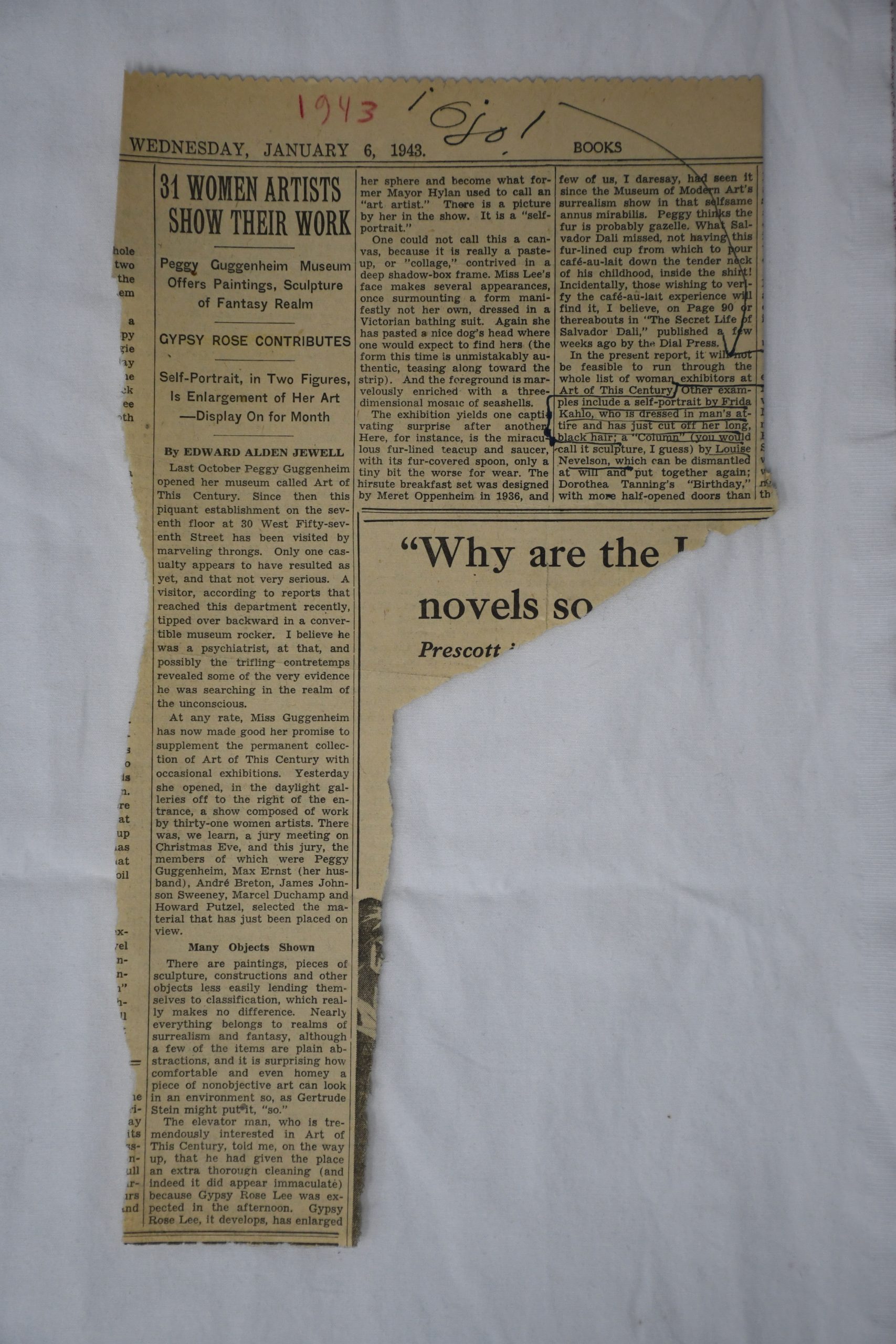
Diego publishes the text “Frida Kahlo and Mexican Art.”
Diego publishes the text “Frida Kahlo and Mexican Art.”

Frida paints The Broken Column.
Frida paints The Broken Column.

Frida begins to write her diary.
Frida begins to write her diary.

Frida gives Diego her canvas Diego and Frida (1929–1944).
Frida gives Diego her canvas Diego and Frida (1929–1944).

Frida paints Moses or Nuclear Sun.
Frida paints Moses or Nuclear Sun.

Juan O’Gorman expands the Casa Azul.
Juan O’Gorman expands the Casa Azul.

Frida has spinal column surgery.
Frida has spinal column surgery.
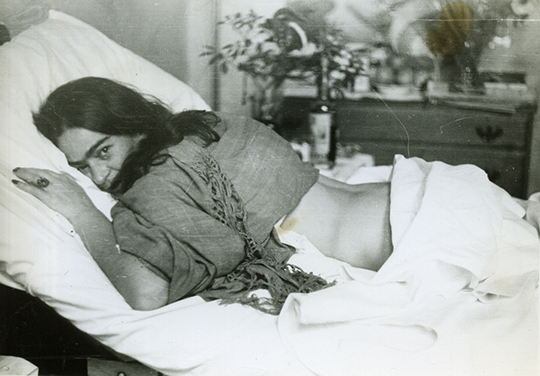
Frida paints The Little Deer or The Wounded Deer or Karma.
Frida paints The Little Deer or The Wounded Deer or Karma.

Frida paints Tree of Hope Remain Strong.
Frida paints Tree of Hope Remain Strong.

Frida is awarded honorable mention for her work Moses.
Frida is awarded honorable mention for her work Moses.
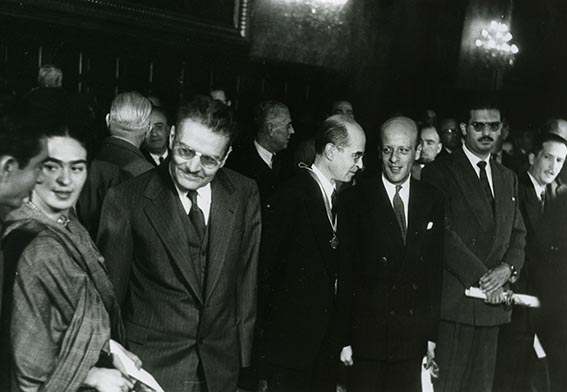
Frida paints My Family (unfinished).
Frida paints My Family (unfinished).

Frida paints The Love Embrace of the Universe, the Earth (Mexico), Myself, Diego, and Mr. Xólotl.
Frida paints The Love Embrace of the Universe, the Earth (Mexico), Myself, Diego, and Mr. Xólotl.

Frida’s health declines and she is hospitalized repeatedly.
Frida’s health declines and she is hospitalized repeatedly.

Frida’s friends often pay her visits.
Frida’s friends often pay her visits.
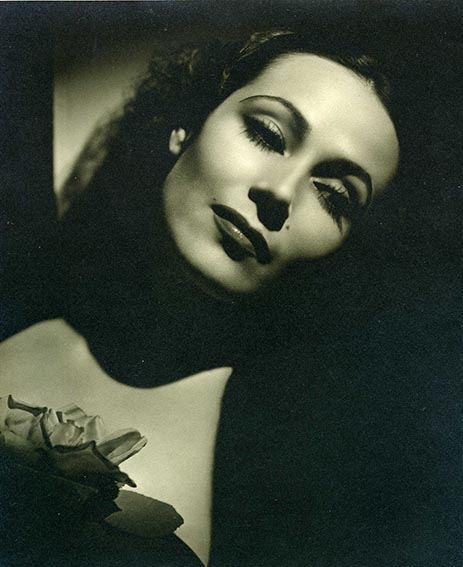
Frida paints Still Life (“I Belong to Samuel Fastlicht”).
Frida paints Still Life (“I Belong to Samuel Fastlicht”).

Despite her declining health, Frida continues to paint.
Despite her declining health, Frida continues to paint.

Frida paints Portrait of My Father, Guillermo Kahlo.
Frida paints Portrait of My Father, Guillermo Kahlo.

Given her delicate health, Frida needs full-time nurses.
Given her delicate health, Frida needs full-time nurses.
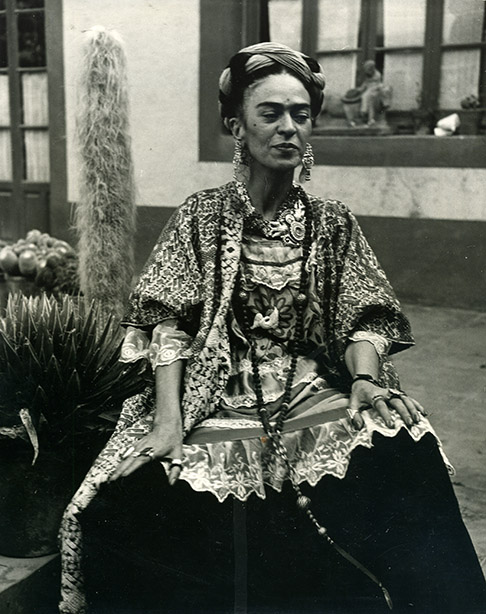
Frida’s work is featured in the exhibition "Mexican Art: From the Pre-Columbian Period to the Present."
Frida’s work is featured in the exhibition "Mexican Art: From the Pre-Columbian Period to the Present."
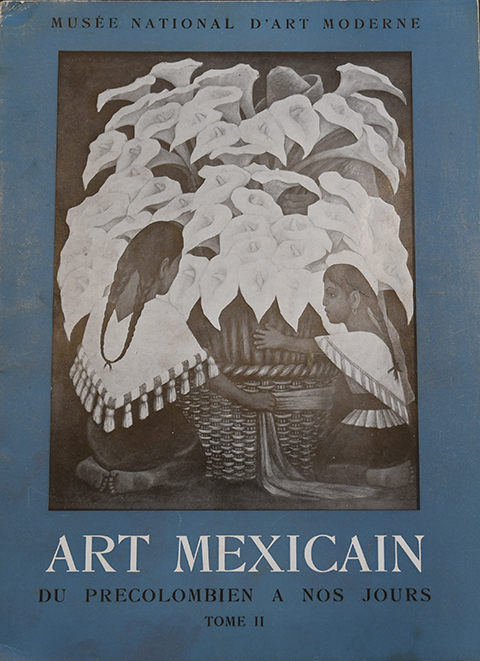
Frida and some of Los Fridos paint the murals at La Rosita.
Frida and some of Los Fridos paint the murals at La Rosita.

The photographer Lola Álvarez Bravo organizes an exhibition of Frida’s work.
The photographer Lola Álvarez Bravo organizes an exhibition of Frida’s work.
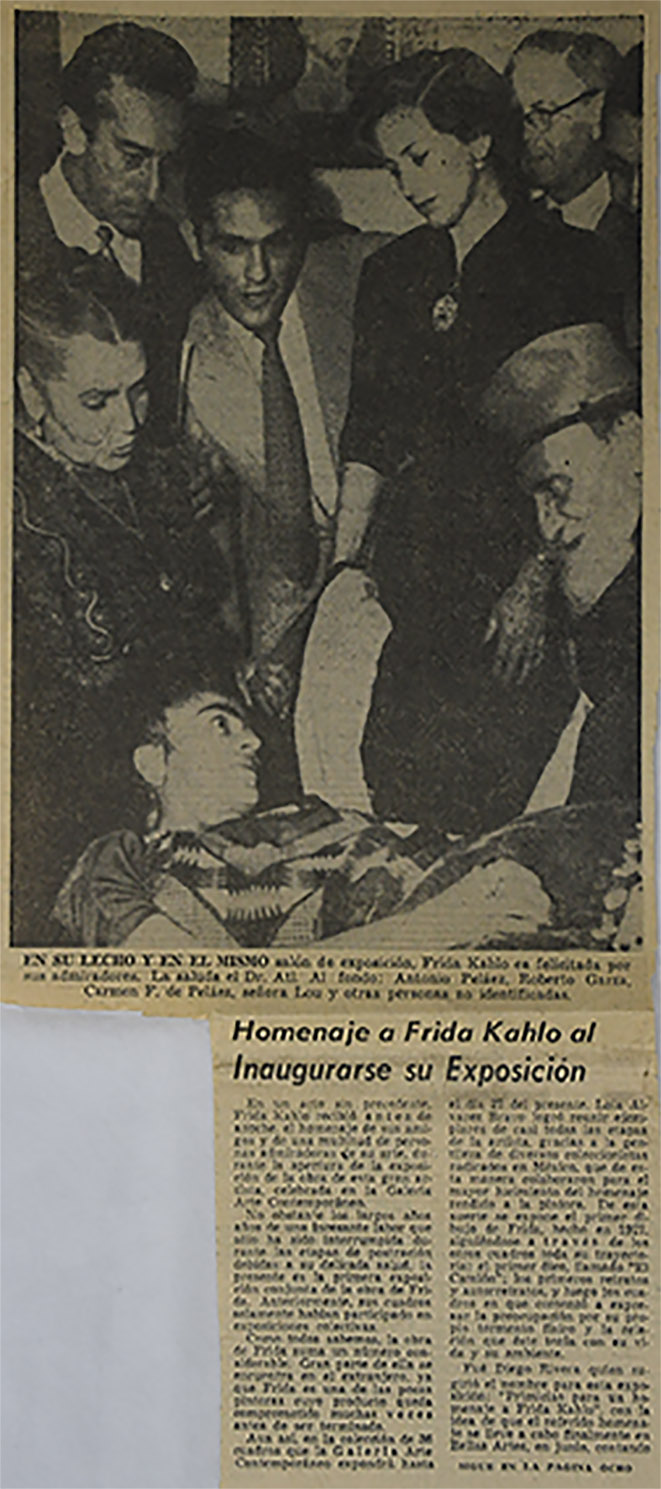
Half of Frida’s right leg is amputated.
Half of Frida’s right leg is amputated.

Frida paints Marxism Will Give Health to the Sick (unfinished).
Frida paints Marxism Will Give Health to the Sick (unfinished).
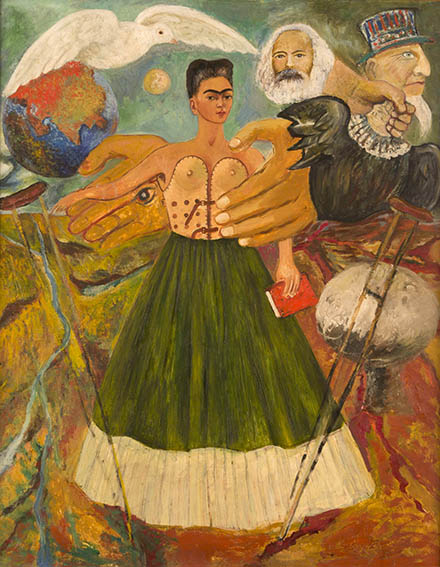
Frida attends a protest against United States intervention in Guatemala.
Frida attends a protest against United States intervention in Guatemala.

Frida dies at the age of 47.
Frida dies at the age of 47.

!
Scroll to explore the timeline
